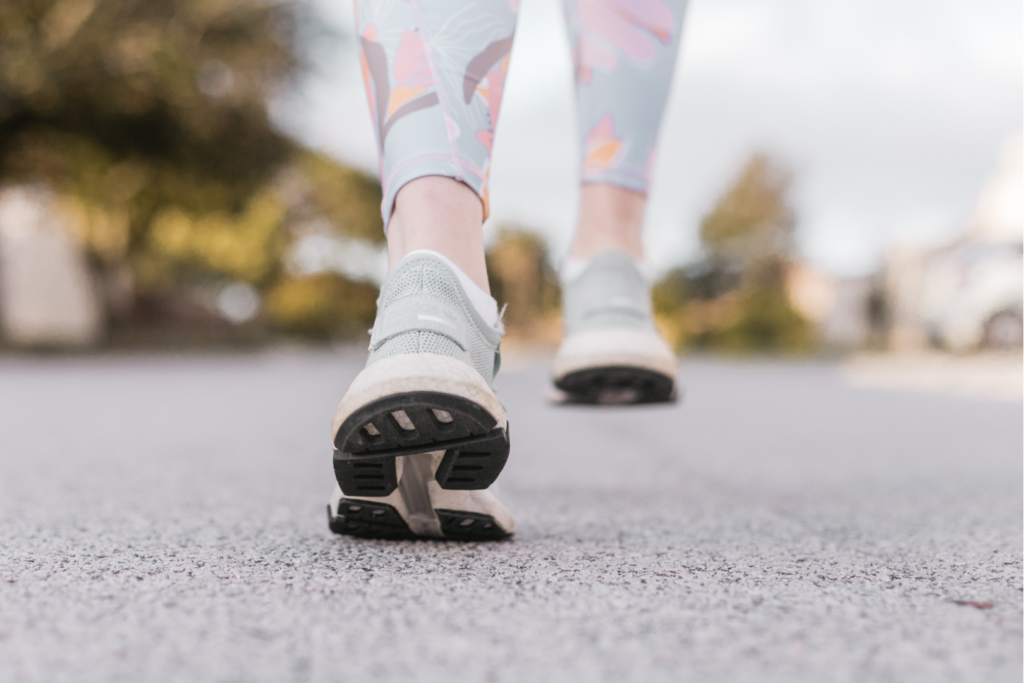Let’s Talk About Walking And What It Can Do For Your Health

Let’s Talk About Walking And What It Can Do For Your Health
How far do you walk throughout the day?
The average American walks roughly 1.5 miles every day, totaling somewhere between 3,000-4,000 steps.
What if I told you that these simple daily movements like walking and taking the stairs could be the missing puzzle piece to restoring your metabolism, increasing your energy level, and losing excess weight this year?
This simple daily movement is called NEAT.
That’s short for Non-Exercise Activity Thermogenesis.
What is Non-Exercise Activity Thermogenesis (NEAT)?
It’s simple—NEAT is any movement that your body performs. Walking, standing up, sitting down, running errands, emptying the dishwasher, taking a shower, getting in and out of the car, moving around your office, twitching, fidgeting, sneezing… you get the picture.
All of this movement requires energy. Where does the energy come from? From the food that you eat and stored excess energy in the form of fat cells.
How our bodies use the energy from the food we eat
There are four ways our bodies use the energy from the food we eat. Today, we’re going to focus on the biggest one—NEAT!
Non-Exercise Activity Thermogenesis (N.E.A.T.)
This is the energy our body expends every time we move. From the little things like blinking to walking from your bedroom to the kitchen, NEAT is always happening.
So many of us post-COVID still work from home. Unfortunately, the work-from-home lifestyle has halted everyone’s activity levels. For many of us, NEAT Activity is non-existent —no getting in and out of the car, walking from the car to our office, not walking from office to office for meetings.
Zip, zero, zilch movement throughout the day!
Here are the facts: when your NEAT slows down, you expend fewer calories for energy. As you continue eating the same amount and moving less, your body will store the excess calories as fat.
In addition, this lack of movement can cause a cascade of hormonal issues that negatively impact energy, sleep, fatigue, anxiety, cravings, and much more.
Been there during Covid, done that, and don’t want to go back.
So you’re probably asking yourself, “How do I increase my NEAT?”
Now that we know the pivotal role NEAT can play in restoring our metabolism, let’s talk about how we can improve it.
How to kick up your NEAT Activity…
Track Your Steps
Fitbit, Apple Watches, and even free apps on your smartphone do a great job tracking your daily step count. Start tracking to see what your average daily step count is. From there, set a goal to increase it each week. Start where you are and build upon your foundation each week.
Practice Exercise Snacking
What’s exercise snacking, you ask? Take short breaks from your work or school, and instead of having a food snack, have an exercise snack. one of my favorites is 20 squats, 10 push-ups, and 10 mountain climbers. It takes less than 5 minutes and boosts energy levels through the roof. Choose an exercise that works for you and snack on it a few times per day.
Walk, Stand, Sit
Walk around instead of sitting or standing in one place any time you can. want to listen to your favorite podcast? Pop it on and go for a walk around the neighborhood. sitting at your kid’s soccer practice? Walk the perimeter of the field while you watch them. There are plenty of simple ways to get walking in every day.
If you don’t have time to get to walk in, use standing as another means of staying active. Yep, standing uses more energy than sitting!
Walk your way to better health
There you have it—the health secret hack that nobody is talking about and all of us are doing. Armed with this secret, I encourage you to focus on increasing your N.E.A.T. Incorporating walking consistently produces big results.
